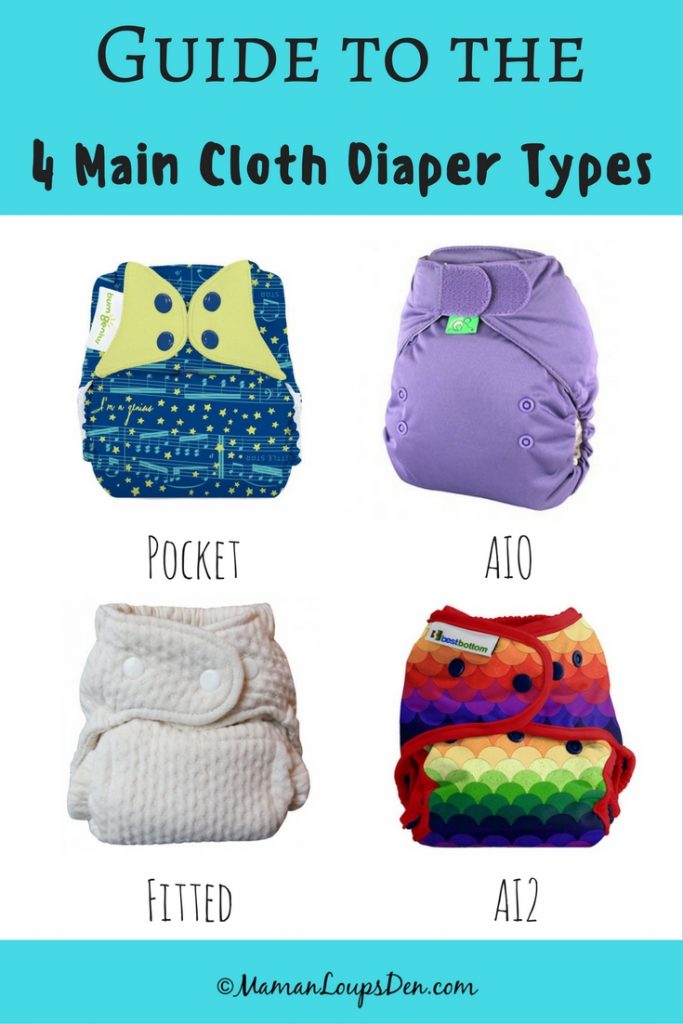
I would just like to state for the record that I completed a course in Terminology during my Translation Diploma, and it was my favourite course. I did my project on knitting terminology, but dagnabbit if I’d been cloth diapering at that time, I would’ve done my project on cloth diaper terminology.
I know from experience and conversations with cloth-curious moms that cloth diapering lingo can be enough to dissuade many parents from learning about the kinds of cloth diapers on the market today. Many Facebook group conversations rely heavily on abbreviations, so that can be even more bewildering. I hope to make the world of cloth diapering less intimidating and more accessible by explaining the four most common cloth diaper styles you will encounter when shopping or perusing reviews. Remember, as always, don’t hesitate to reach out to me via private message or email if you need more help!
What is a cloth diaper?
The first thing we need to establish when approaching the four main styles of cloth diapers are the two main components of any complete cloth diaper:
- Waterproof outer
- Absorbent inner
(This is the same way a disposable diaper is designed, of course!)
The way in which these two components are combined is what distinguishes the different styles of diapers on the market. The waterproof outer portion of the diaper is going to be either PUL (whether you pronounce that as “pull” or “P-U-L” is totally up for debate) or TPU. These are both just laminated polyester fabrics that are waterproof.

The absorbent component of the diaper is going to be one or more of the following fibres: microfibre, polyester, cotton, hemp or bamboo. When you hear people refer to “natural fibre” diapers, they are referring to diapers made from some blend of cotton, hemp or bamboo, since those are made from plants found in nature. Microfibre is a synthetic fibre, essentially made from plastic.
An additional component in some diapers is a “stay dry” layer. This is a layer of fabric that sits on top of the absorbent component and keeps moisture away from baby’s bum. This layer will always be some kind of polyester fabric, typically fleece, microsuede or athletic wicking jersey.
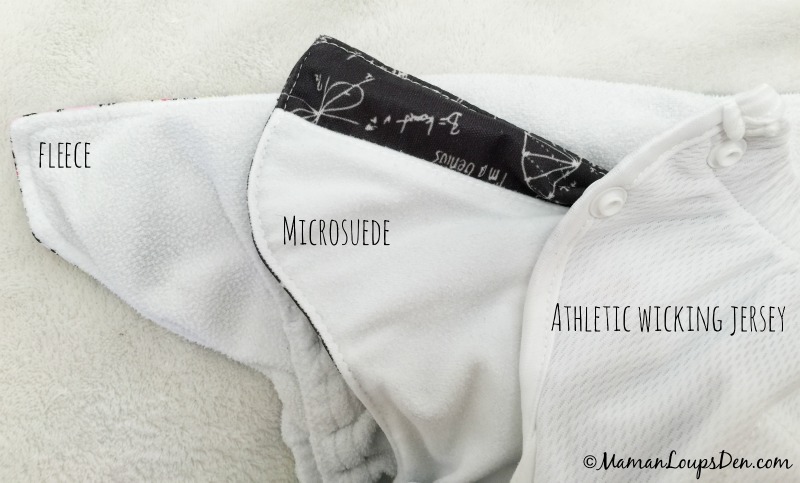
What’s the deal with sizing?
There are newborn-sized diapers (see all my reviews here), one-size diapers and sized diapers. The vast majority of brands offer a one-size option, typically fitting somewhere between 8–35 lbs. To adjust the sizing on your child you use the different levels of rise snaps and waist snaps. Some diapers will also have a hip snap, which is an additional snap at the waist. Some diapers will have hook and loop (Velcro) for the waist instead of snaps.
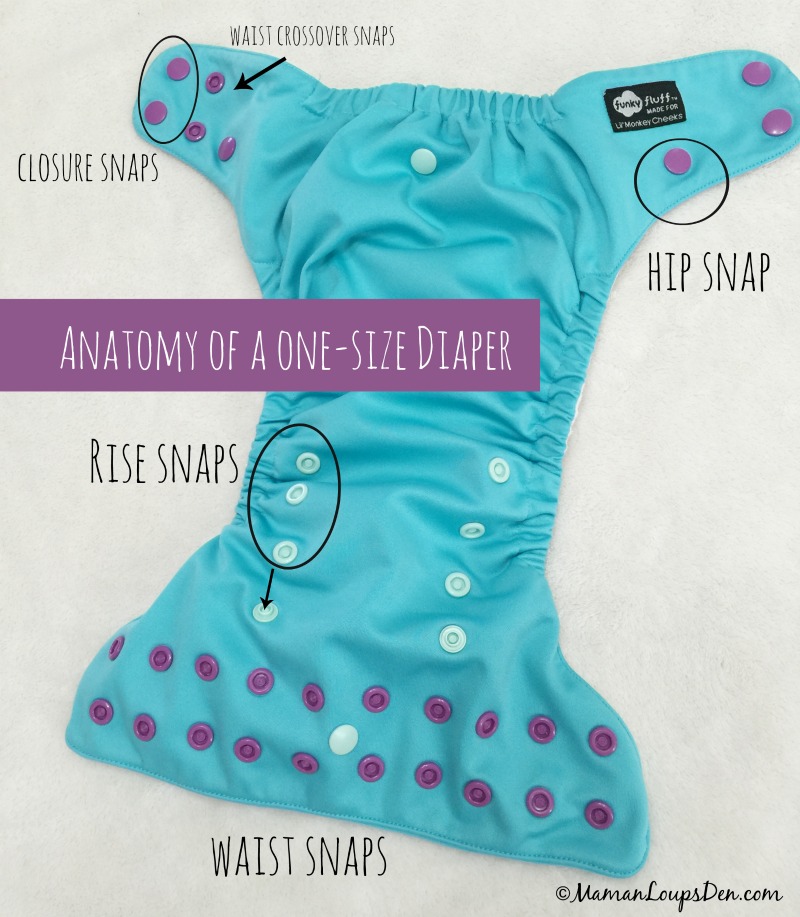
Some parents love sized diapers (usually a brand will have two to three different sizes) because they are less bulky (usually no need to fold down the diaper with rise snaps) and have a trimmer fit. Many parents prefer the economy of a one-size diaper. The vast majority of my diapers are one-size, but despite the similar weight ranges suggested by the various manufacturers, they all fit very differently! Certain brands did not get us to potty training with my son because he was taller than average. Other brands took a while to fit on my daughter as she was an average-sized newborn.
Pocket Diapers
Pocket Diapers have a waterproof exterior with a pocket on the inside in which to stuff the absorbent insert.

More often than not, the pocket is made of one of the stay-dry materials I listed above. If the insert is made of a natural fibre, then sliding it into the pocket provides a stay-dry layer against baby’s bum, since cotton, bamboo and hemp feel wet to the touch when peed on. (Some babies hate this, some don’t care.) If the insert is made of microfibre, the pocket protects baby’s bum from this abrasive and drying fibre that should never be placed directly against baby’s skin.
Every time a pocket diaper is soiled, you change the whole thing. You would generally want to pull the insert out of the pocket and put the two pieces into your wet bag (or wherever you store you diapers until wash day) separately so that they both get thoroughly cleaned. In my experience, old-school top loading washing machines with the great big agitator will actually cause the insert to agitate out of the pocket, so you can skip this step if this is the type of washer you have.
Some pocket diapers are sold without inserts, and you must purchase your inserts separately. I actually quite like this option because you are not obligated to buy the inserts made by that particular brand. Basically any insert will work with any pocket diaper.
The two most common styles of insert are long, narrow rectangles and trifold. The long narrow rectangles are comprised of several layers of fabric sewn together. They may or may not have snaps in order to shorten the insert for smaller babies or to create extra layers of absorbency. Rumparooz and BumGenius pocket diapers both come with this style of microfibre insert, plus a microfibre booster, and you cannot purchase these brands without their inserts.
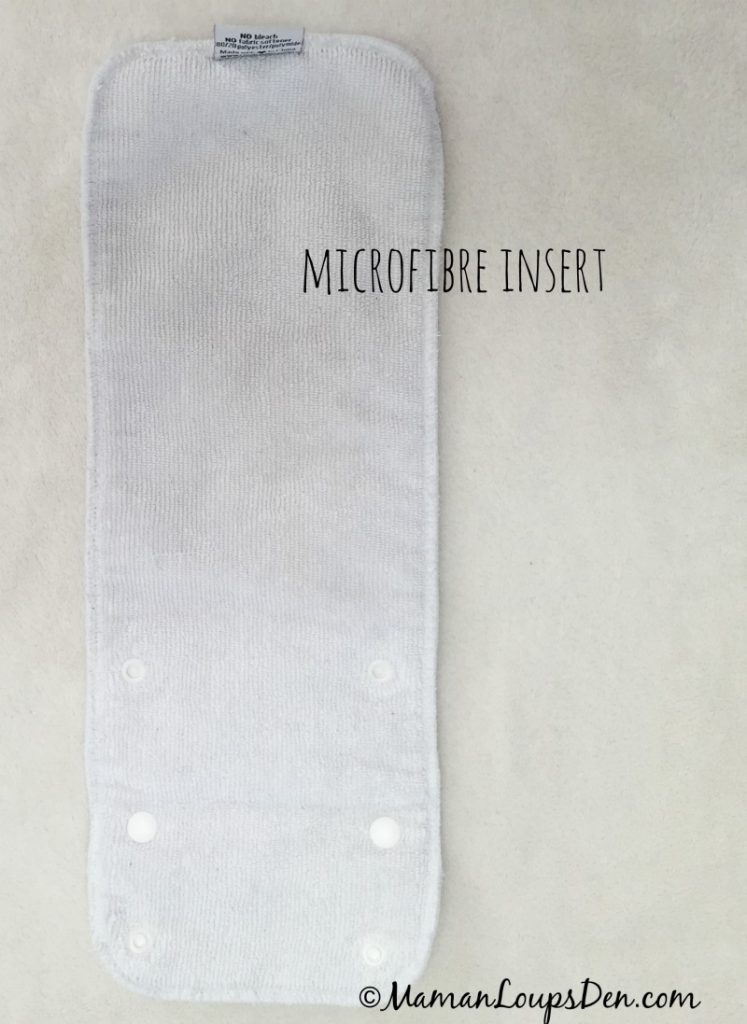
A trifold insert is a wide rectangle of fabric, usually two- or three-ply, which must be folded in order to fit into the diaper pocket. Trifold inserts are typically cotton blended with either hemp or bamboo. Oftentimes they’re folded in three, hence the name. What I love best about this style of insert is that you can fold it in a variety of ways to get the right absorbency just where you need it. AppleCheeks and AMP both make popular trifold inserts. My personal favourite is by Öko Créations.
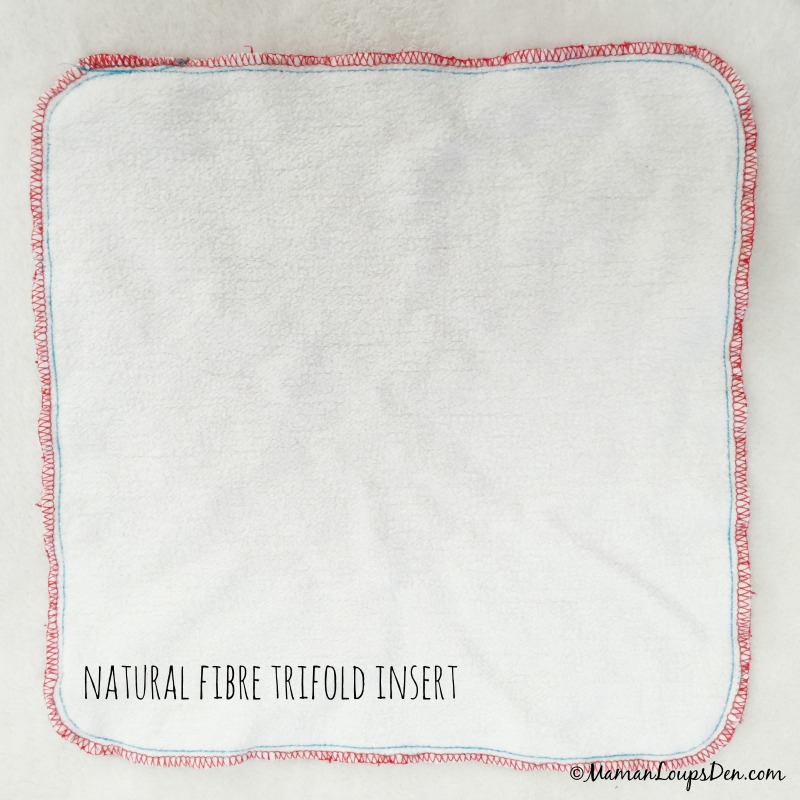
I typically use a small microfibre booster on top of one of these amazing hemp trifolds in my pocket diapers.
Pros of Pocket Diapers:
- You can easily customize absorbency using a variety of inserts.
- They typically feature a stay-dry layer.
- They are easy to spray (see my Spray Pal review here).
Cons of Pocket Diapers:
- They require stuffing (an extra step on laundry day).
See all my pocket diaper reviews here.
All-in-One (AIO) Diapers
AIO diapers have a waterproof exterior with the absorbent components sewn in, creating a one-piece diaper.
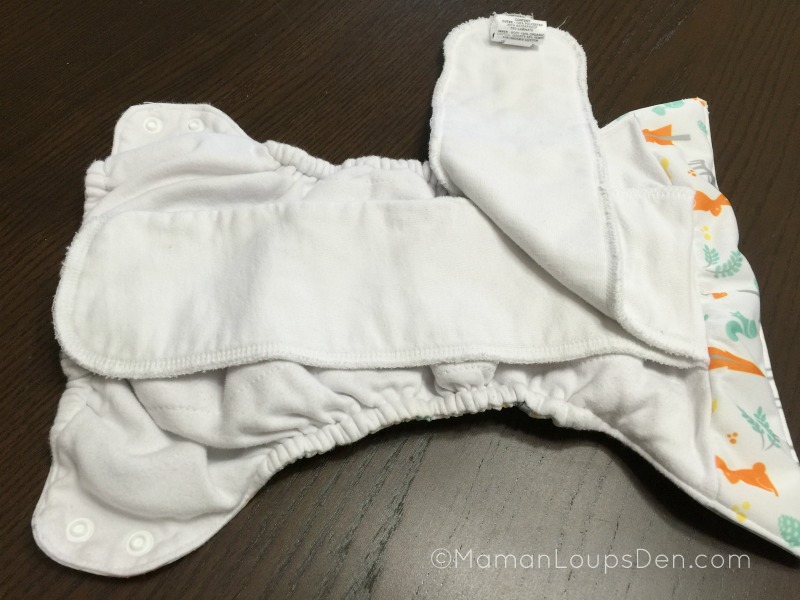
This diaper style involves no folding and usually no stuffing. You don’t have to fish out different pieces in the laundry basket to assemble each diaper.
The design of AIO diapers varies widely; their one similarity is that their absorbent components are attached to the exterior cover.
Flap AIOs

A fairly common AIO design features an insert sewn to the front of the diaper and one sewn to the back. They flap when you hold the diaper upside down! The Thirsties Natural AIO and the BumGenius Freetime are like this. You’ll also see versions with only one insert sewn in (the regular Thirsties AIO and Smart Bottoms) and ones where you can attach the second insert thanks to a snap (the GroVia AIO, for example). Then there’s the BumGenius Elemental, which has two inserts, but both are sewn to both ends of the diaper. I find AIOs with flaps to be more awkward to boost when additional absorbency is required and also awkward to spray poop off of.
Pocket-style AIOs
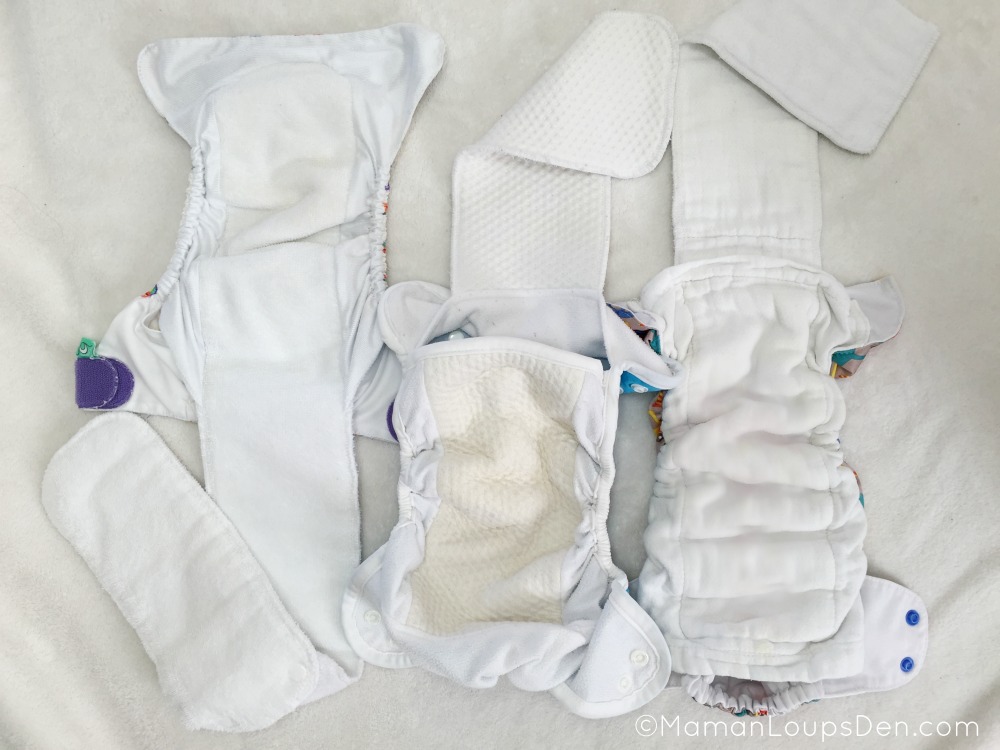
Another style, my favourite AIO style in fact, features what I like to call a “tongue style” soaker (I’m using soaker as a synonym for “absorbent insert”) that you tuck into a pocket. Yes, it’s essentially a pocket diaper where the insert is attached. What I love about this style is that the pocket allows you to easily add extra absorbency, and it also means it’s easier to spray clean than the flap style explained above. TotsBots, Bummis and Blueberry AIOs are pocket AIOs. There are also AIOs that have a pocket, but the insert is entirely sewn inside and doesn’t need to be tucked in. Easy Peasies’ AIO is like this. The pocket helps decrease dry time and is also a spot to tuck in a booster.
Pros of All-in-One Diapers:
- One piece means less fuss.
Cons of All-in-One Diapers:
- They are typically more expensive than other styles.
- They usually take longer to dry.
- AIOs with inserts sewn to either end may be awkward to boost and spraying off poop can be a pain.
See all my AIO diaper reviews here.
All-in-Two (AI2) Diapers
AI2 diapers have a waterproof exterior, (called a cover, shell or wrap) and a separate, absorbent component that is either simply placed inside the cover or is snapped into it to assemble the complete diaper.
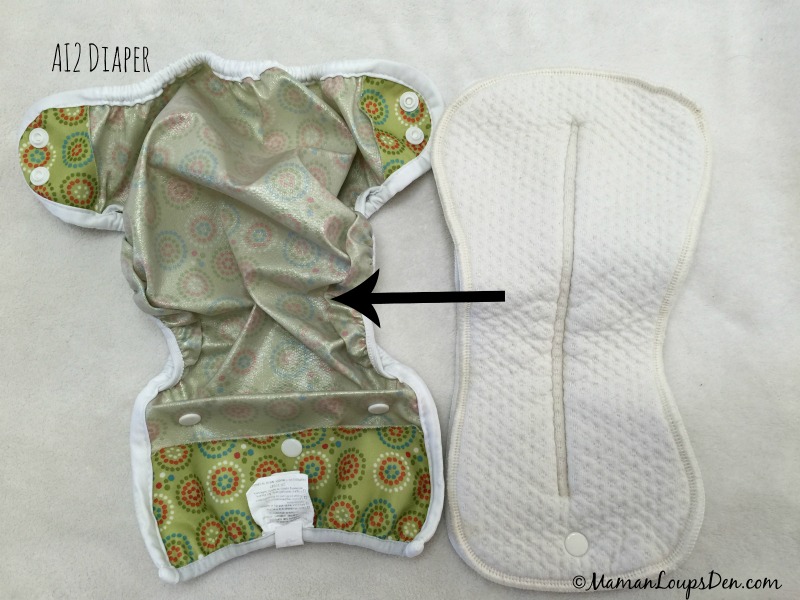
The point of the AI2 is to be able to reuse the cover multiple times. When it’s time to change baby’s diaper, you can usually swap out only the soiled insert, and use that same cover again. The obvious benefit of the AI2 is that you have fewer pieces. You might have two dozen inserts but only twelve covers. This means less money and fewer diapers kicking around your change table.
This style of diaper is the only style I ever used for the first six months of Cub’s life! I used prefolds folded inside Bummis and GroVia covers. (You can also use prefolds in your pocket diaper covers!)

Prefolds are what you might consider “old-school” cloth diapers. They are rectangular pieces of fabric (normally cotton) with more layers of fabric in the centre. The prefold is folded before putting on the baby (hence the name), and can be used secured around baby or simply place inside a cover.
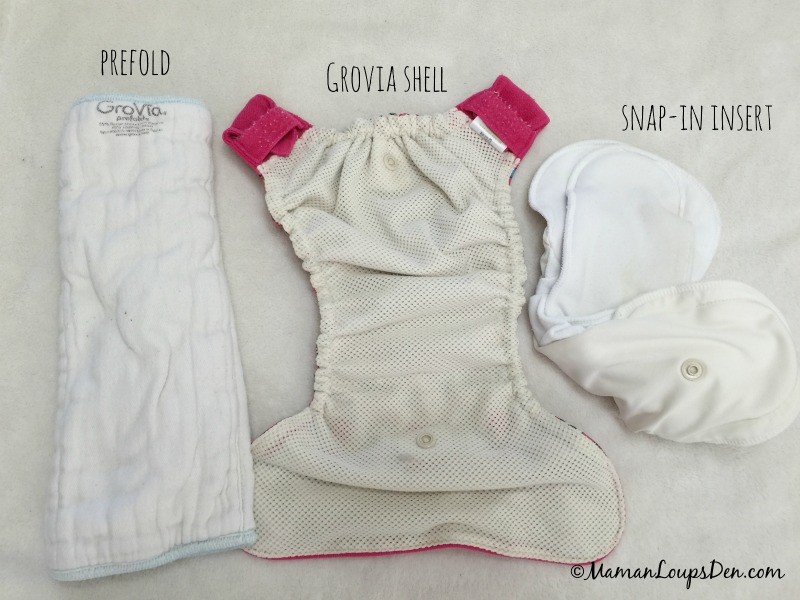
Most AI2 systems on the market have inserts that snap into the waterproof shell. Grovia and BestBottom have a snap at the front and a snap at the back to attach the insert, the TotsBots Peenut and Bummis Duo Brite inserts attach only at the front, and Cotton Babies’ Flip system has no snaps, you just place the insert inside the flaps of the cover.
As long as your insert does not leave microfibre in direct contact with baby’s bum, you can use pretty much any insert you want in any cover you want and you’ve created your own AI2 situation. The biggest distinction I make when it comes to AI2s is how wipeable the covers are. For example, AppleCheeks and AMP diapers have pockets, but they are also marketed as AI2s because you can place the insert on top of the pocket. The problem is that the pocket is made of fleece. If the urine soaks through to the fleece, or a little smidgen of poo gets stuck to it, you’ll want to toss the cover in the wash anyway. “True” AI2 diapers, in my opinion, have a cover that can be effectively wiped clean between uses or even lightly rinsed and hung to dry, so you can reuse it later in the day. TotsBots Peenut diapers, Best Bottom and the Bummis Duo-Brite are great, truly reusable AI2 options.
Pros of AI2 Diapers:
- They are typically less expensive.
- A stash of AI2s takes up less space.
- They are easy to pack in the diaper bag (just pack extra inserts instead of full diapers).
Cons of AI2 Diapers:
- They require a tiny bit of extra “work” to assemble.
- Not all AI2 diaper covers are wipeable.
See all my AI2 diaper reviews here.
Fitted Diapers
A fitted diaper is a fully absorbent diaper that is secured to baby before placing a waterproof cover on top.
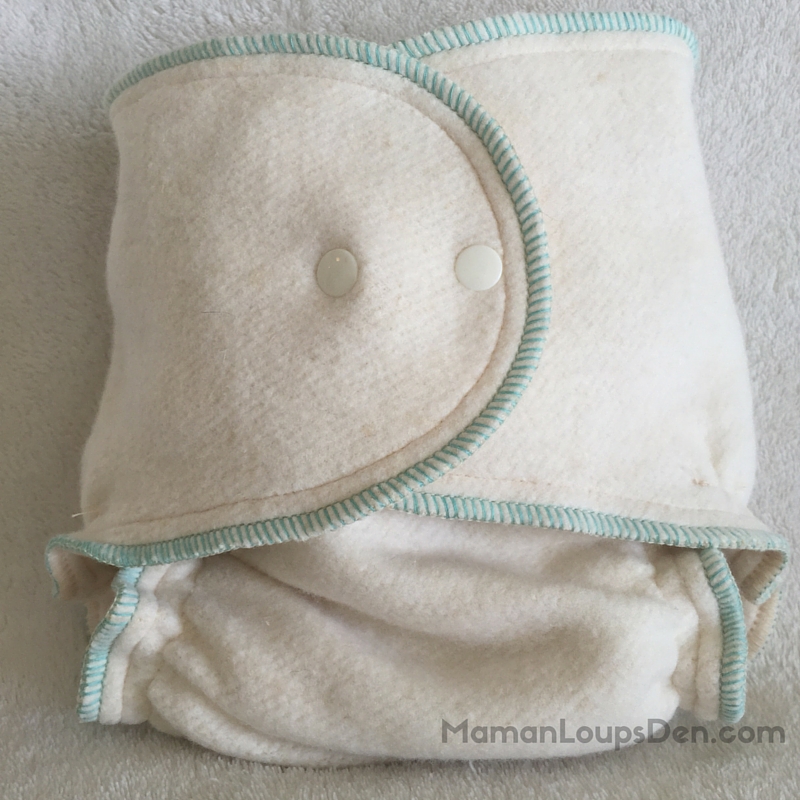
I regularly use pockets, AIOs and AI2s, so it’s pretty rare for me to use a fitted diaper. I even wrote a whole post about why I don’t really like fitted diapers. That being said, there are many mamas who love fitteds, and some of the most beautiful handmade diapers I’ve seen are made by very talented work-at-home moms.
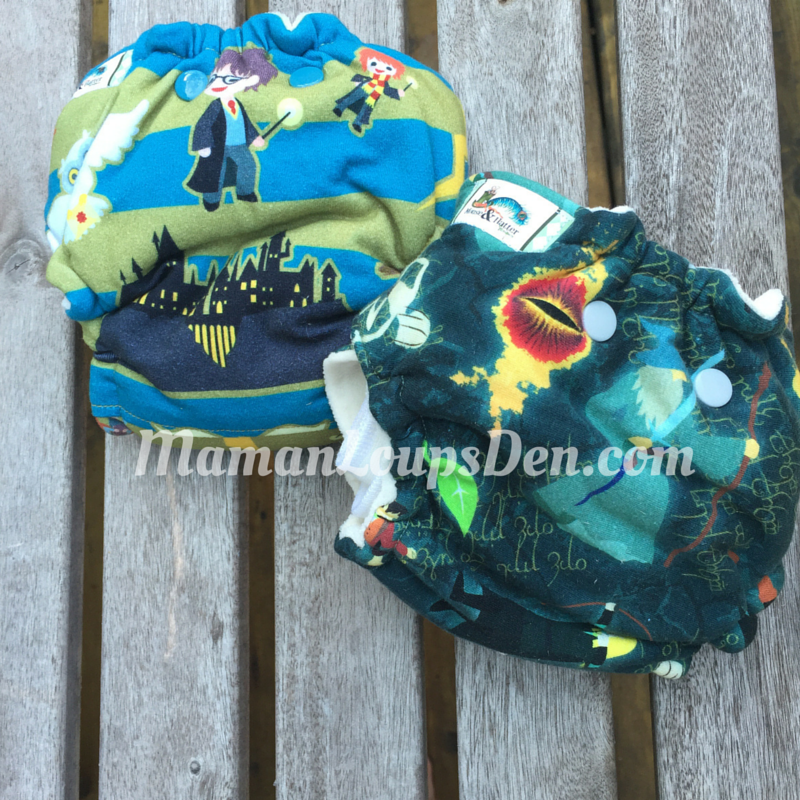
Some parents like to use fitted diapers overnight for their all-around absorbency. Some fitteds, known as “hybrid fitteds” actually have a leak-resistant hidden layer (fleece) which means you can get away with using them without a cover for shorter periods of time. You may be confused by fitted diapers in general, since oftentimes they feature gorgeous prints but are ultimately destined to be covered with a diaper cover. I don’t know what to tell you. This is true!
Pros of Fitted Diapers:
- They are available in a variety of fabric combinations to create super-absorbent nighttime options.
Cons of Fitted Diapers:
- They are more difficult to launder thoroughly due to their sewn-in absorbent core.
- Because the entire diaper becomes wet, baby’s entire diaper region is exposed to wetness, including their hips, waist and their entire bum.
You can see all my fitted diaper reviews here.
Bonus vocabulary:
Booster: A booster is a smaller absorbent insert that you use to boost the absorbency of a diaper. They come in many shapes, sizes and fibres.
Double gussets: An extra inner leg elastic designed for maximum containment.
Flat diaper: A diaper that looks like a receiving blanket and is folded many times either around the baby or directly into the cover. This is what you probably imagine when you think of retro cloth diapers requiring pins.
Liner: A liner is use to line the diaper and catch poop. Disposable liners can be flushed (depending on your plumbing situation) or thrown out. There are also washable liners, made of fleece, allowing you to “pick up” the poop and drop it in the toilet and protect your diapers from stains or creams.
Wet bag: A waterproof bag, usually zippered, in which to store your soiled cloth diapers. Small ones are used while you’re out and about, larger ones are used to store diapers until wash day.
Okay, so that concludes my overview of cloth diaper types. Any questions?























Leave a Reply